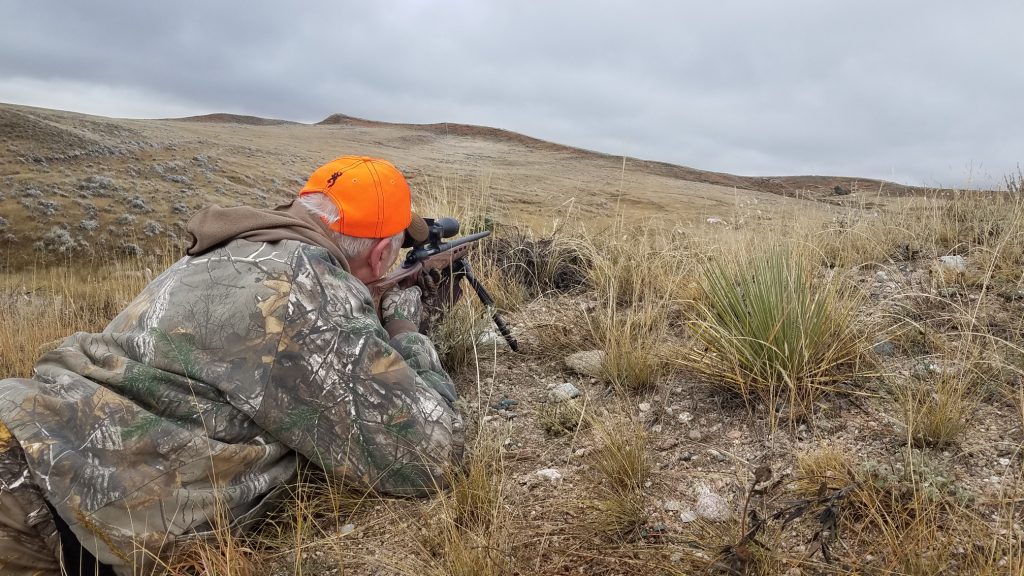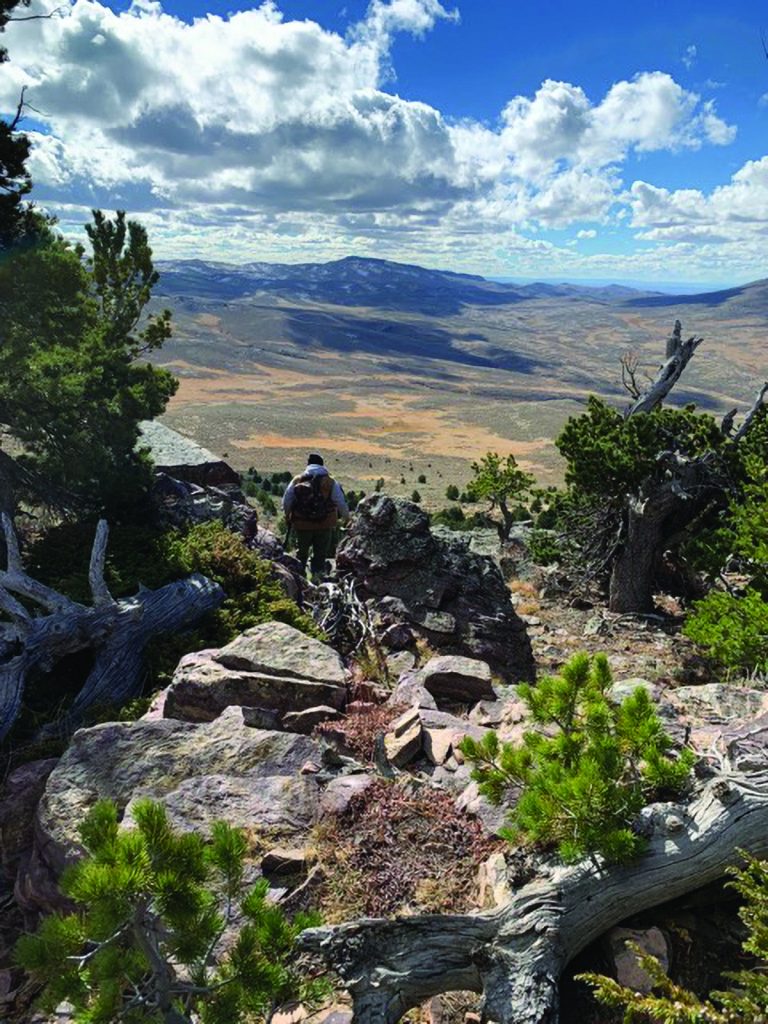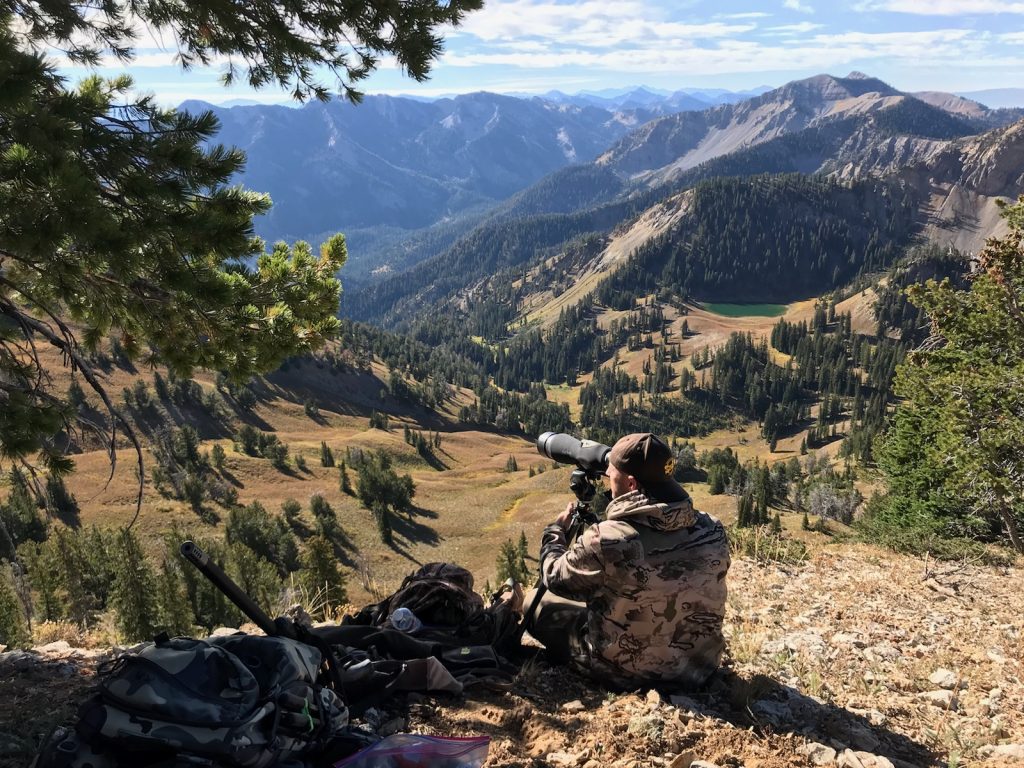Western Hunting: Your Workout Recommendations and Guide
You now have a western hunt book — possibly for the first time — or you’re returning for another unforgettable experience. Either way, you need to make sure your fitness is in check; and to be fair, hunting is hard and western hunting is even more difficult. From your gear to your emotions, everything can be put to the test during a western hunt. Even with the help of modern day technology, your fitness level is the only tool that can give you leg up. While you may have skated by without fitness prep for your other hunts, we advise that you take your physical condition into consideration for your upcoming western hunt.

Before we go any further, it worth mentioning that we are not physical trainers, fitness professionals, or nutritionists; these are simply suggestions based on what has worked for us and our clients, historically. Please consult your physician before taking on any fitness or diet plan.
Fitness begins with your diet. As you’ve likely heard, abs are made in the kitchen. We recommend eating intuitively while fueling your body with nutritionally-dense foods. This includes a well-balanced diet of proteins, fats, carbohydrates, and fiber. Eating enough — calorically — is also very important. We don’t recommend cutting or counting calories; rather, we suggest choosing whole, unprocessed foods. If you’re wondering if your intake is satisfactory to fitness improvements (i.e. muscle gain), we recommend checking in with your doctor for his or her recommendations on food quantity. Once you have your food aligned, physical activity follows suit.
Keep in mind that a body in motion, stays in motion. Exercising can seem very overwhelming, but once you get started, it’s easy to keep going. A basic Google search will give you hundreds of workouts. It can seem daunting and discouraging. That’s where we come in. Being experienced in the field, we understand what your off-season prep should look like. Note: all western hunts are a bit different, so this is simply an all-encompassing / general guideline.

Western hunting and mountain hunting mean full-body fitness; you’re not sitting in a blind all day — you’re out hunting hard and scavenging for those animals. Ultimately, you’ll get the animal you’re looking for because your fitness level allows you to keep up with them. Therefore, it’s not about muscle gain, it’s about conditioning and endurance.
Cardio. You can achieve your cardiovascular goals in numerous forms of exercise, and most of them don’t require a gym. Plan on a cardio activity five days a week for 30-45 minutes and build on that time as your hunt gets closer. Running, biking, elliptical machines, stair climbers, or even getting outside and hiking are great options. Another suggestion is to wear a weighted vest, backpack with weight, or something to simulate the weight of your hunting pack about 1-2 days per week of cardio.
Weight Days. Integrate weighted exercises 3-4 days a week. You can do this in addition to cardio (or on non-cardio days). Squats, lunges (reverse, forward and lateral), pushups, shoulder press, and core and stability exercises are easy to do at home or in a gym. For squats, you’ll want to get to 90 degrees, tracking your knees over your ankles, and really push up from your heals; this will engage your quads, hamstrings and glutes efficiently and effectively. It will make those days in the saddle more comfortable — we promise.
When it comes to lunges, watch this video for form and your basic how-to. When you get to your pushups, we recommend that you keep your hands wide to accentuate pushing from your chest; with narrow hands, you’ll push from your triceps. With a shoulder press, you’ll want to hold the weight at your shoulders and push overhead. Finally, core and stability workouts are absolutely critical when hunting across uneven terrain and on horseback. This is especially true when you are traversing the rough terrain with a heavy backpack.

For a workout routine with weights, talk to a trainer at a local gym and let them know of your goals. Be sure they’re aware of the time frame you need to peak your fitness at, they’ll create a plan tailored specifically for you. If you do not have a gym membership or you don’t have a gym near you, here is a 12-week workout inspired from Outdoor Life.
Week One:
Mon/Wed/Fri cardio: Go for a brisk 45-minute walk, preferably including up and down terrain.
Tues/Thurs/Sat muscular: Spend 30 minutes climbing up and down the local bleacher stairs (or a nice steep hill). Take regular short rests. Incorporate 3 sets of 10: squats, lunges, pushups, shoulder press, and core.
Week Two:
Mon/Wed/Fri cardio: Add short stints of jogging to your walk.
Tues/Thurs/Sat muscular: same 30-minute routine, just cut down on rest time. Incorporate 3 sets of 10: squats, lunges, pushups, shoulder press, and core.
Week Three:
Mon/Wed/Fri cardio: Begin pushing yourself, walking less and jogging more.
Tues/Thurs/Sat muscular: Same 30-minute routine. Incorporate 3 sets of 12: squats, lunges, pushups, shoulder press, and core.
Week Four:
Mon/Wed/Fri cardio: Try to jog the majority of your 45 minutes.
Tues/Thurs/Sat muscular: Try to spend the entire 30 minutes climbing your stairs or hillside, alternating between five squats and five lunges every few minutes. Only rest at the ten and twenty-minute marks.
Week Five:
Mon/Wed/Fri cardio: Warm up, then alternate two-minute sprints with walking to catch your breath. 45 minutes.
Tues/Thurs/Sat muscular: Wear a pack with 20 pounds of weight in it during your routine. Incorporate 4 sets of 12: squats, lunges, pushups, shoulder press, and core.
Week Six:
Mon/Wed/Fri cardio: Back to jogging, but pick up the pace a bit.
Tues/Thurs/Sat muscular: Try to get through your routine — hiking with pack and five crunches/lunges every five minutes — without stopping to rest.
Week Seven:
Mon/Wed/Fri cardio: Back to sprinting/walking. Push yourself.
Tues/Thurs/Sat muscular: Add five pounds to your pack (total 25), same routine.
Week Eight:
Mon/Wed/Fri cardio: Trade the jogging in for a smooth relaxed 45 min run. (Faster than jogging, but not a sprint)
Tues/Thurs/Sat muscular: Same routine as week seven — but carry a more cumbersome item to simulate a bow or rifle.
Week Nine:
Mon/Wed/Fri cardio: Sprinting and walking. Keep pushing.
Tues/Thurs/Sat muscular: Wear a pack with 20 pounds of weight in it during your routine. Incorporate 4 sets of 12: squats, lunges, pushups, shoulder press, and core.
Week Ten:
Mon/Wed/Fri cardio: More smooth relaxed running. Keep it strong.
Tues/Thurs/Sat muscular: Wear a pack with 20 pounds of weight in it during your routine. Incorporate 4 sets of 20: squats, lunges, pushups, shoulder press, and core. INCORPORATE A BEAR CRAWL.
Week Eleven:
Mon/Wed/Fri cardio: Back to walking and sprinting, you should be traveling well.
Tues/Thurs/Sat muscular: Wear a pack with 25 pounds of weight in it during your routine. Incorporate 4 sets of 20: squats, lunges, pushups, shoulder press, and core. INCORPORATE A BEAR CRAWL.
Week Twelve:
Mon/Wed/Fri cardio: Running, just keep it strong and relaxed.
Tues/Thurs/Sat muscular: Do a lighter modified routine from week eleven, let those muscles feel recovered and ready to go for your hunt next week.
If you have any additional fitness questions, or questions about a hunt with SNS Outfitter and Guides, please click here. You can also have a free brochure sent to your home by clicking here.
Happy fitness and happy hunting!

